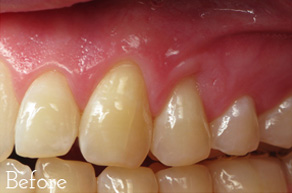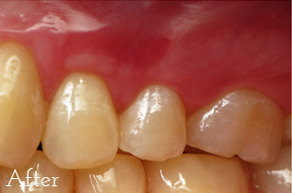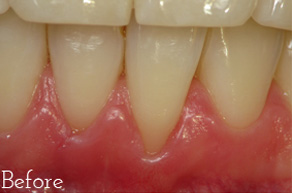
Gum recession is one of the most noticeable results of periodontal disease (gum disease) and is the movement of the gum line down the root of a tooth. Recession can be limited to one tooth or many and symptoms vary from none at all to root sensitivity, inflammation of the tissues, root exposure, cavities, or esthetic concerns. It’s important to have gum recession repaired because gum tissue is the primary barrier to bacteria. Without adequate gum tissue around the teeth, bacteria can cause gum disease, bone and gum deterioration, and even tooth loss.
Recession can be limited to one tooth or many and have symptoms including:
Those who feel their teeth are too large or who are embarrassed by the amount of tooth showing can also benefit from gum grafting procedures. Gum grafting can also be used to lower the gum line to a more attractive level. Doing so will reduce the amount of tooth shown and increase the overall health of the teeth and gums.
There are three types of gum grafting surgery. Which type your dentist uses will depend on each person’s unique situation and specific needs.








